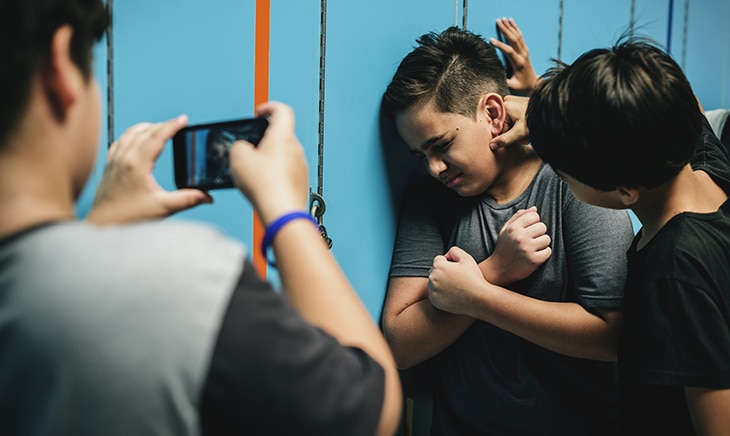According to the Centers for Disease Control and Prevention, nearly 1 in 5 people aged 6 to 19 in the United States are obese. And being perceived as different—such as being overweight or underweight—is one of the most common reasons why kids get bullied.
Many people living in higher-weight bodies have experienced stigma and discrimination. One manifestation of this is weight-based bullying. Weight-based bullying doesn’t just happen to youth who have a higher weight body. Bullying happens to youth of all sizes. Some children perpetuate a fear in others of becoming larger or they may bully others because they perceive them as too skinny. Children and youth who are self-conscious about their weight or express a sensitivity about their body image may be especially prone to the negative fallout from bullying, including the use of unhealthy weight control behaviors, putting them at risk for developing an eating disorder.
Fear of being laughed at or bullied can contribute to isolation from peers. Mental health consequences may include depression and anxiety. Children who are bullied may also experience low self-esteem and behavioral problems. Bullying can even affect a child’s physical health, resulting in increased blood pressure and other physiological stress reactions.

Weight-based bullying doesn’t only happen among youth; adults sometimes contribute to this problem. For example, athletic coaches or health counselors may make weight-related comments to or about youths in front of their peers. This body shaming may be experienced as a form of bullying. This type of adult behavior toward children at school often has consequences more damaging than peer-perpetrated bullying.
The important thing to remember is that bullying, not a person’s body size or appearance, is the problem. Focusing on changing someone’s body should never be considered the solution to bullying behavior.
Here are some important dos and don’ts for adults and youth when it comes to weight-based bullying:
Do
- Call out bullying when you see it.
- Emphasize that nobody deserves to be teased.
- Recognize the behavior, not someone’s size, as the problem.
- Stand up for others who may be targeted because of their bodies.
- Stay in a group – friends can intervene and help make the bullying stop.
- Report adults who call out a child’s size with negative comments or with bullying to the adult’s supervisor or boss.
Don’t
- Joke about size, weight or clothing – someone else’s or your own.
- Talk about people’s food choices or what they are eating.
- Degrade your own body or food choices with others.
- Don’t focus on celebrity appearances – remember, photos in magazines and on social media are almost always photo-shopped!
Other information about bullying, disordered eating, and eating disorders can be found at the National Eating Disorders Association website.
Additional resources include the StopBullying.gov blogs, “Bullying and Binge Eating Disorder” and “Bullying and Body Image
* "Higher-weight" refers to individuals living in bodies that are often referred to as "overweight" or "obese."

